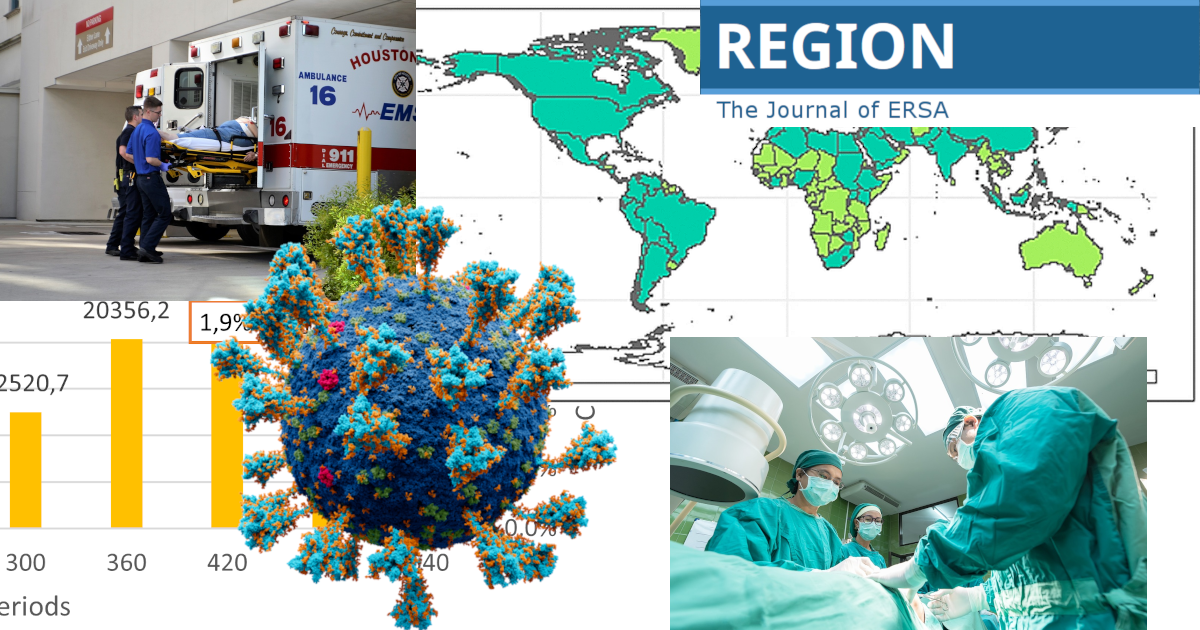The influence of underlying conditions of countries on the COVID-19 lethality rate
DOI:
https://doi.org/10.18335/region.v11i1.491Abstract
The management of the COVID-19 pandemic not only depends on the stringency measures established by governments but also and more importantly on the underlying capacity of territories in economic and health and sanitary infrastructure. This study aims to identify how the underlying conditions of countries influence on their level of COVID-19 lethality rate. To do so, a classification of countries is first conducted by the means of the k-means partitioning method, using COVID-19-related variables such as the lethality rate, the contagion growth rate and the number of days with respect to China. Based on the resulting groups of countries of the first stage, Tobit and Ordinary Least Squares regressions are estimated to determine the effect of the underlying characteristics of countries on their COVID-19 lethality rate. Risks factors which increase the lethality rate in countries are the contagion growth rate, the trade flow with China, the age composition of the population and, to a lesser extent, the population density. Factors that help to reduce the lethality rate are the government effectiveness, the health infrastructure (hospital beds) and, to a lesser extent, the economic growth rate.

Downloads
Published
How to Cite
Issue
Section
License
Copyright (c) 2024 Grace Carolina Guevara Rosero, Eymy Coralia Illescas Navarrete

This work is licensed under a Creative Commons Attribution 4.0 International License.
REGION is an open journal, and uses the standard Creative Commons license: Copyright We want authors to retain the maximum control over their work consistent with the first goal. For this reason, authors who publish in REGION will release their articles under the Creative Commons Attribution license. This license allows anyone to copy and distribute the article provided that appropriate attribution is given to REGION and the authors. For details of the rights authors grant users of their work, see the "human-readable summary" of the license, with a link to the full license. (Note that "you" refers to a user, not an author, in the summary.) Upon submission, the authors agree that the following three items are true: 1) The manuscript named above: a) represents valid work and neither it nor any other that I have written with substantially similar content has been published before in any form except as a preprint, b) is not concurrently submitted to another publication, and c) does not infringe anyone’s copyright. The Author(s) holds ERSA, WU, REGION, and the Editors of REGION harmless against all copyright claims. d) I have, or a coauthor has, had sufficient access to the data to verify the manuscript’s scientific integrity. 2) If asked, I will provide or fully cooperate in providing the data on which the manuscript is based so the editors or their assignees can examine it (where possible) 3) For papers with more than one author, I as the submitter have the permission of the coauthors to submit this work, and all authors agree that the corresponding author will be the main correspondent with the editorial office, and review the edited manuscript and proof. If there is only one author, I will be the corresponding author and agree to handle these responsibilities.




